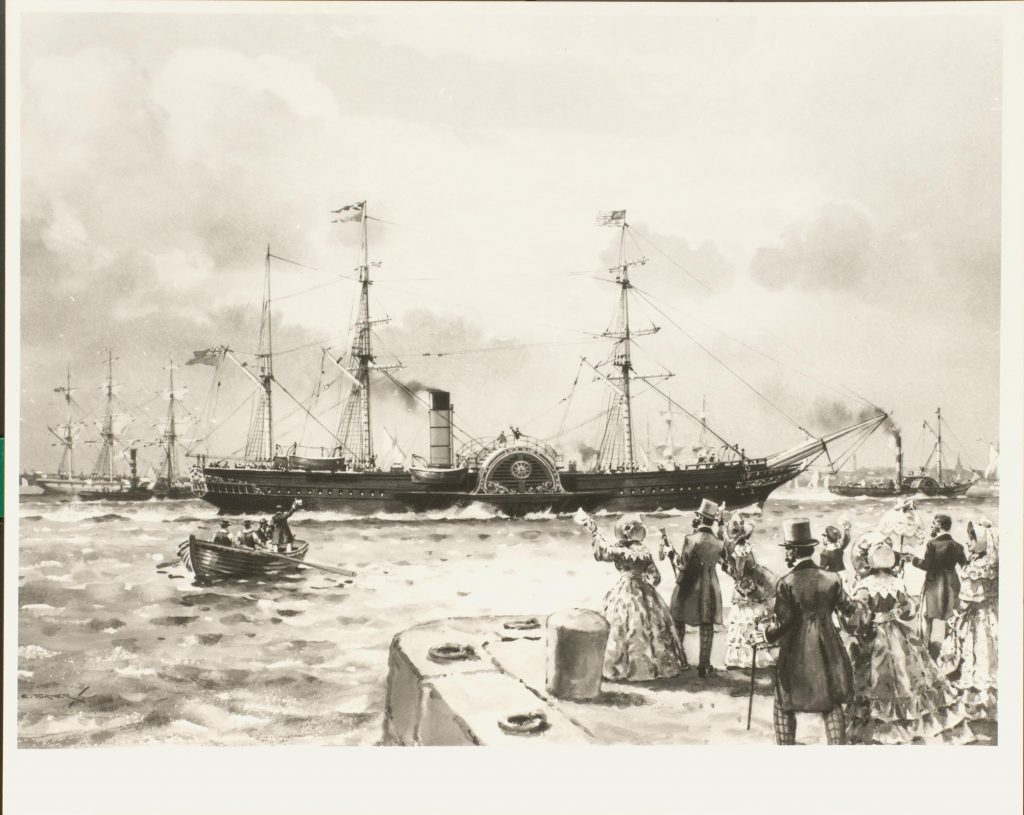On Friday 6th September, Cunard’s flagship Queen Mary 2 will return to Liverpool to celebrate its 400th transatlantic crossing. This will be the first time that a Cunard ship has visited Liverpool since the historic naming ceremony of its newest ship, Queen Anne took place in June.
In celebration of this milestone achievement by a Cunard liner, SCA is excited to announce that Cunard’s original passenger lists have been digitised and are accessible via the university’s Digital Heritage Lab.


Comprising three volumes in total, the passenger lists cover west-bound crossings between Liverpool and Halifax and Boston between 1840-1853. This includes the very first scheduled crossing on 4th July 1840 when the 1,156-ton RMS Britannia, left Liverpool, marking the company’s beginnings in transatlantic travel. Within a year RMS Britannia and her three sister ships were providing the first timetabled weekly steamship service across the Atlantic.
The passenger lists are a unique record of those journeys and the passengers undertaking them. Although we know that Sir Samuel Cunard and his daughter travelled on board the first scheduled voyage, and that the writer Charles Dickens sailed in 1842, along with his wife and female servant, there are many more passengers that we don’t yet know about.
Indeed, it is felt that many researchers are unaware that the passenger lists have survived as part of the Cunard archive and that ultimately these records have become an untapped resource. SCA would like to change that.
Digitising the volumes presents an opportunity to provide public access to these historically important records and encourages new avenues of research. Unnecessary handling is also avoided, in turn helping to preserve the originals for future generations.
The digitised Cunard passenger lists are also fully text searchable (including handwriting) and can be accessed via the university’s Digital Heritage Lab.
Further information about Cunard’s business archive and how to access it can be found on the Cunard archive webpage.